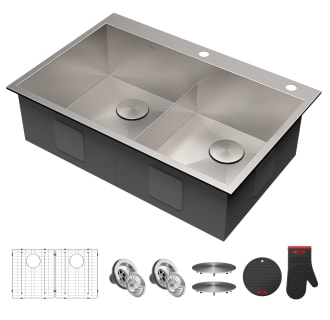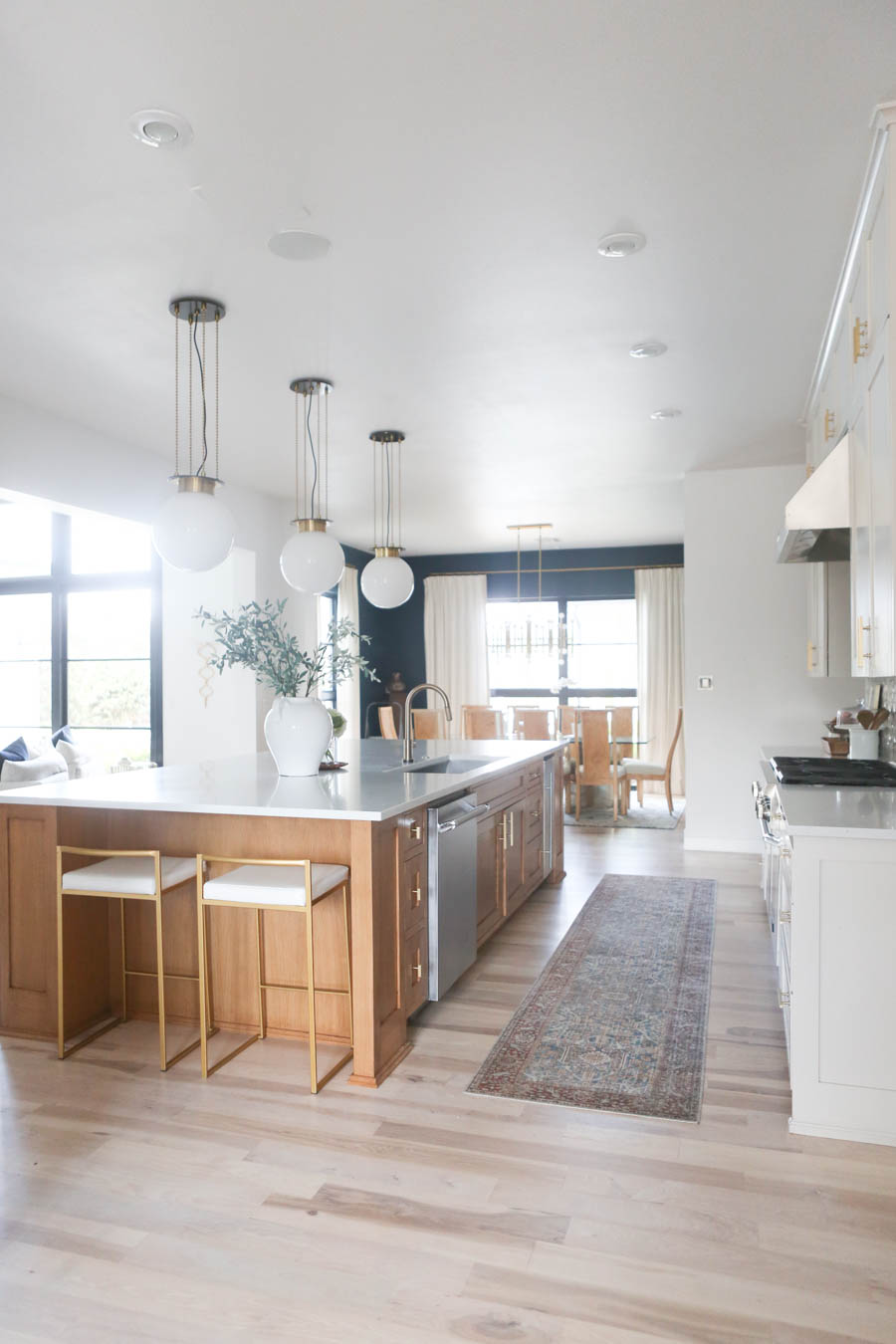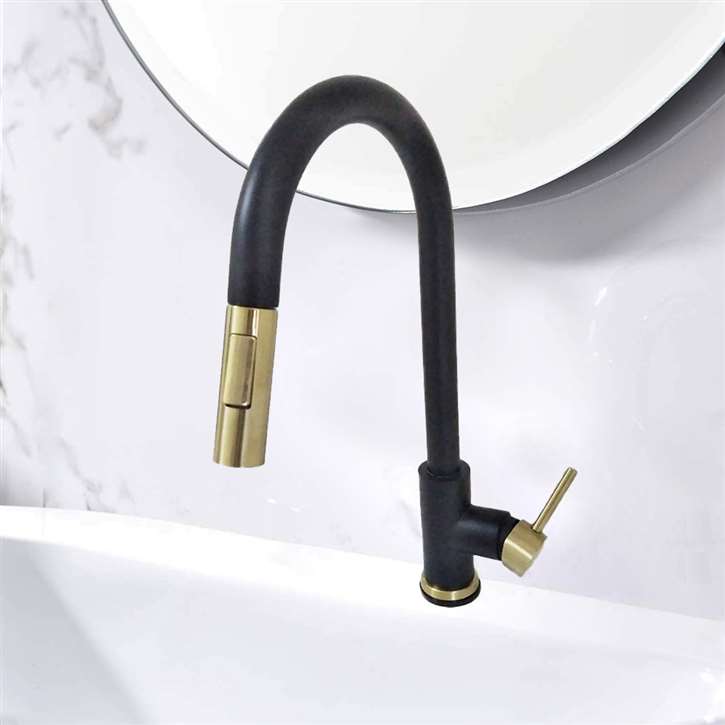When designing a kitchen, the placement and selection of a sink faucet for the kitchen island are crucial decisions that can significantly impact both the functionality and aesthetics of the space. The kitchen island is often the centerpiece of the room, serving multiple purposes such as food preparation, cleaning, dining, and even socializing. Therefore, the sink faucet installed on the island must be chosen with care, ensuring it meets the demands of the household while complementing the overall kitchen design.
One of the primary considerations when selecting a kitchen island sink faucet is the faucet’s height and reach. Kitchen islands are often open to other areas of the home, making the faucet a prominent feature that should not obstruct sightlines or create a visual distraction. A faucet that is too tall may dominate the space and block views, while one that is too short may not provide the necessary reach for filling pots or washing large dishes. It’s important to strike a balance between functionality and aesthetics, choosing a faucet that is proportionate to the size of the island and the sink.

The style of the faucet is another key consideration. With kitchen islands being a focal point, the faucet should align with the overall design theme of the kitchen. Whether the kitchen has a modern, traditional, industrial, or farmhouse style, there are faucets designed to complement each aesthetic. For example, a sleek, minimalist faucet with clean lines would be ideal for a modern kitchen, while a more ornate, vintage-style faucet might be better suited for a traditional or farmhouse kitchen. The material and finish of the faucet, such as stainless steel, brushed nickel, or oil-rubbed bronze, should also be chosen to match other elements in the kitchen, such as cabinet hardware and light fixtures.
Functionality is just as important as style when choosing a kitchen island sink faucet. Many homeowners opt for faucets with pull-down or pull-out spray heads, which offer increased flexibility for washing dishes, rinsing produce, and cleaning the sink. These faucets typically feature a retractable hose that extends from the spout, allowing for greater maneuverability. Additionally, faucets with multiple spray functions, such as aerated stream, powerful spray, or pause modes, can make kitchen tasks more efficient and enjoyable.

Another functional consideration is the type of faucet handle. Single-handle faucets are popular for kitchen islands because they are easy to use and provide precise control over water temperature and flow with just one hand. This can be particularly useful when multitasking or when you have your hands full. Dual-handle faucets, on the other hand, offer a more traditional look and allow for separate control of hot and cold water. The choice between single-handle and dual-handle faucets often comes down to personal preference and the overall design of the kitchen.
In recent years, touchless and touch-activated faucets have gained popularity for their convenience and hygiene benefits. Touchless faucets use motion sensors to start and stop the flow of water, reducing the need to touch the handle with messy hands. Touch-activated faucets, meanwhile, allow you to turn the water on and off with a simple tap anywhere on the spout or handle. These modern faucet options are particularly well-suited for busy kitchens where cleanliness is a priority and can be a great addition to a kitchen island, especially in households with children.

The installation and placement of the faucet on the kitchen island also require careful planning. The faucet should be positioned in a way that maximizes the efficiency of the work triangle, which is the relationship between the sink, stove, and refrigerator. Ideally, the faucet should be easily accessible from all sides of the island and should not interfere with other activities, such as food prep or dining. It’s also important to consider the relationship between the faucet and the sink size; a larger sink may require a faucet with a longer reach, while a smaller sink may pair well with a more compact faucet.
Another factor to consider is the water flow rate of the faucet. Water flow rate is typically measured in gallons per minute (GPM), and it dictates how quickly water flows from the faucet. While many faucets offer standard flow rates, low-flow models are also available for those who are conscious of water conservation. These eco-friendly faucets reduce water usage without sacrificing performance, making them a great choice for environmentally conscious households. However, it’s important to ensure that the chosen flow rate meets the household’s needs, especially for tasks that require a significant amount of water, such as filling large pots or soaking dishes.
The choice of materials and finishes for the kitchen island sink faucet plays a significant role in its durability and ease of maintenance. Faucets made from solid brass or stainless steel are known for their longevity and resistance to corrosion. The finish should also be chosen with care, as it affects both the appearance and maintenance of the faucet. For instance, brushed finishes tend to hide water spots and fingerprints better than polished finishes, making them easier to keep clean. In contrast, polished finishes offer a bright, reflective look that can add a touch of elegance to the kitchen but may require more frequent cleaning.
In addition to the faucet itself, the accessories that complement the kitchen island sink should also be considered. Soap dispensers, air gaps, and sink strainers are all functional elements that can be installed alongside the faucet to enhance the overall usability of the sink area. These accessories should be chosen to match the style and finish of the faucet, creating a cohesive and polished look. Integrated accessories can also help keep the countertop clutter-free, which is especially important on a kitchen island where space may be limited.

Proper plumbing and water supply connections are essential for the functionality of the kitchen island sink faucet. Before installing the faucet, it’s important to ensure that the water supply lines are properly routed and that there is sufficient water pressure to support the faucet’s operation. In some cases, additional plumbing work may be required to accommodate the faucet’s specific requirements, such as a separate line for filtered water or a dedicated line for a pot filler. Consulting with a professional plumber can help ensure that the installation is done correctly and that the faucet operates smoothly.
The ease of maintenance and repair is another important consideration when choosing a kitchen island sink faucet. High-quality faucets often come with warranties and readily available replacement parts, making it easier to address any issues that may arise over time. It’s also important to choose a faucet with easily accessible components, such as a removable aerator or a replaceable cartridge, which can simplify maintenance tasks. Regular cleaning and periodic maintenance, such as checking for leaks and ensuring that the spray head retracts properly, can help extend the life of the faucet and keep it functioning smoothly.
The overall cost of the kitchen island sink faucet, including installation, should be factored into the budget. While it may be tempting to choose a lower-cost faucet to save money, it’s important to consider the long-term value and durability of the faucet. Investing in a high-quality faucet that meets your functional and aesthetic needs can save money in the long run by reducing the likelihood of repairs or replacements. Additionally, some high-end faucets offer advanced features, such as touchless operation or filtered water dispensers, which can add convenience and value to the kitchen.
Finally, the faucet’s impact on the kitchen’s overall design should not be underestimated. The kitchen island is often a gathering place for family and friends, making it a focal point in the home. The right faucet can enhance the island’s visual appeal and contribute to a cohesive design scheme that reflects the homeowner’s style. Whether you prefer a bold, statement-making faucet or a subtle, understated design, the faucet should complement the island and the kitchen as a whole, contributing to a space that is both beautiful and functional.

Common Mistakes to Avoid
One common mistake when choosing a kitchen island sink faucet is failing to consider the faucet’s height and reach to the island’s design and layout. A faucet that is too tall or too short can disrupt the visual balance of the island and impact functionality, making it difficult to fill pots or wash dishes effectively. It’s important to measure carefully and choose a faucet that is appropriately sized for the sink and the island’s overall design.
Another frequent error is overlooking the importance of the faucet’s finish and material. While it may be tempting to choose a faucet based solely on appearance, it’s essential to consider the durability and maintenance requirements of the material. For example, polished finishes may require more frequent cleaning to maintain their shine, while brushed finishes may be more forgiving of water spots and fingerprints. Choosing a faucet that balances aesthetics with practicality can help ensure long-term satisfaction.
Improper installation is another common mistake that can lead to issues down the line. Kitchen island sink faucets require precise installation to ensure proper water flow, pressure, and alignment. Hiring a professional plumber to install the faucet can help prevent leaks, misalignment, and other issues that can arise from DIY installation attempts. Additionally, professional installation ensures that the faucet is properly secured and that all plumbing connections are correctly made.

Selecting a faucet based on price alone can also be a mistake. While it’s important to stay within budget, choosing the cheapest option may result in a faucet that lacks durability, advanced features, or a warranty. Investing in a high-quality faucet that meets your functional needs and aesthetic preferences can save money in the long run by reducing the likelihood of repairs or replacements.
Another oversight is failing to consider the faucet’s compatibility with the sink and surrounding cabinetry. The faucet should be proportionate to the size of the sink and should not interfere with the opening and closing of cabinets or drawers. Additionally, the faucet’s design should complement the style of the cabinetry and other fixtures in the kitchen to create a cohesive look.
Finally, neglecting to consider the faucet’s maintenance requirements can lead to frustration over time. Some faucets require more frequent cleaning or maintenance to keep them looking and functioning their best. It’s important to choose a faucet that fits your lifestyle and maintenance preferences, ensuring that it remains a functional and attractive part of your kitchen for years to come.

What are the benefits of choosing a pull-down or pull-out faucet for a kitchen island sink?
Pull-down and pull-out faucets offer increased flexibility and functionality, making them popular choices for kitchen islands. These faucets feature a retractable hose that extends from the spout, allowing you to direct the water flow precisely where you need it. This is particularly useful for washing large pots, rinsing produce, and cleaning the sink. Additionally, many pull-down and pull-out faucets come with multiple spray functions, such as aerated stream, powerful spray, and pause modes, which can make kitchen tasks more efficient. The choice between pull-down and pull-out often comes down to personal preference and the size of the sink; pull-down faucets are typically taller and better suited for deeper sinks, while pull-out faucets have a shorter profile, making them ideal for more compact spaces.
How do I ensure that the kitchen island sink faucet complements the overall kitchen design?
To ensure that the kitchen island sink faucet complements the overall kitchen design, start by considering the style of your kitchen. If you have a modern kitchen, a sleek, minimalist faucet with clean lines and a polished or brushed finish may be the best choice. For a traditional or farmhouse kitchen, a more ornate faucet with a vintage or industrial look might be more appropriate. The finish of the faucet should also match or complement other hardware and fixtures in the kitchen, such as cabinet handles, light fixtures, and appliances. Visiting a showroom and viewing samples in person can help you visualize how the faucet will look in your space. Additionally, consider the color scheme of your kitchen and how the faucet’s finish will interact with other elements, such as countertops and backsplash tiles.
What are the key features to look for in a touchless or touch-activated kitchen island sink faucet?
When selecting a touchless or touch-activated kitchen island sink faucet, there are several key features to consider. First, check the reliability of the motion sensors or touch sensors. High-quality sensors should respond quickly and accurately to your movements or touch, ensuring a seamless user experience. Battery life is another important factor; some touchless faucets are powered by batteries, while others can be hardwired into your home’s electrical system. Consider how easy it will be to replace or recharge batteries if necessary. Water temperature control is also crucial; look for a faucet that allows you to preset the water temperature for touchless or touch-activated operation. Finally, consider the overall design and finish of the faucet, ensuring that it complements your kitchen’s style and meets your functional needs.

Can a kitchen island sink faucet be installed without professional help?
While it is possible to install a kitchen island sink faucet without professional help, it is generally recommended to hire a plumber for the installation. Proper installation requires precise measurements, secure mounting, and correct plumbing connections, all of which can be challenging for someone without plumbing experience. A professional plumber can ensure that the faucet is installed correctly, preventing issues such as leaks, misalignment, or poor water pressure. Additionally, many faucet warranties require professional installation to remain valid. If you do choose to install the faucet yourself, be sure to carefully follow the manufacturer’s instructions and take your time to ensure all connections are secure.
What maintenance is required to keep a kitchen island sink faucet in good condition?
Regular maintenance is essential to keep a kitchen island sink faucet in good condition. Start by cleaning the faucet regularly with a soft cloth and mild soap to remove water spots, fingerprints, and grime. Avoid using abrasive cleaners or scouring pads, as these can damage the finish. It’s also important to periodically check for leaks or drips, which can indicate that the faucet’s seals or gaskets need to be replaced. If your faucet has a pull-down or pull-out spray head, make sure the hose retracts smoothly and that the spray head functions properly. Additionally, if your faucet has a removable aerator, clean it periodically to prevent mineral buildup that can reduce water flow. Regular maintenance not only keeps your faucet looking its best but also ensures that it continues to function smoothly over time.
How can I conserve water with a kitchen island sink faucet?
To conserve water with a kitchen island sink faucet, consider choosing a low-flow model that reduces water usage without compromising performance. Low-flow faucets are designed to limit the amount of water that flows through the spout, often using aerators to maintain water pressure while reducing overall consumption. Additionally, many modern faucets come with features such as pause modes or eco-friendly spray settings that help reduce water usage during tasks like washing dishes. Installing a faucet with a motion sensor or touch activation can also help conserve water by making it easier to start and stop the flow quickly, minimizing waste. Regularly checking for leaks and addressing them promptly can also prevent unnecessary water loss, contributing to a more sustainable kitchen.

kitchen island with cooktop

Gorgeous Kitchens with Farmhouse Sinks

My New York Apartment Kitchen Renovation

Beautiful kitchen features sage green cabinets paired with white quartz countertops

Related Posts:
- Automatic Kitchen Faucets For Home
- Kitchen Faucet Side Spray Repair
- Repair Kitchen Faucet Spout
- Moen Banbury Kitchen Faucet Parts
- Delta Single Handle Kitchen Faucet Cartridge Replacement
- Best Delta Kitchen Faucet
- Fix Delta Kitchen Faucet
- Delta Leland Pull Down Kitchen Faucet
- Single Lever Kitchen Faucet With Pullout Spray Repair
- Moen Anabelle Kitchen Faucet Reviews